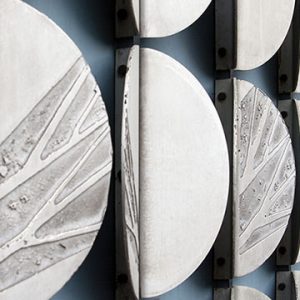Biomimicry
Biomimicry
© Gillian Page-Lee
for BPSM Architects
May 2013
Biomimetrics is the new face of design. Although it was established by biologist Janine Benyus in the 1990’s, it is only really fairly recently that designers have taken it on board as a relevant and fascinating inspiration for a myriad of design opportunities.
So, what exactly IS Biomimicry? It is the philosoply that the natural world can teach and guide us in designing man made products and systems.
In the words of Janine M. Benyus, “What’s It About?”
“The first time I explained biomimicry to a stranger was not in a talk or a workshop, but in a big-box bookstore just after Biomimicry: Innovation Inspired by Nature had come out. I was searching the shelves for the spine, always a breath-held-in moment for a writer. I checked the nature section, environment, design, and engineering, but it just wasn’t there. Before I could slink away, the bookseller appeared, and I asked him where it might be shelved.
He came back with a perfectly normal but impossible question: “What’s it about?”
After you finish a book, a pack of ideas race to your lips, nipping and barking to be the first one out. It’s hard to choose. “OK. It’s about looking to nature for inspiration for new inventions,” I blurted. “It’s learning to live gracefully on this planet by consciously emulating life’s genius. It’s not really technology or biology; it’s the technology of biology. It’s making a fiber like a spider, or lassoing the sun’s energy like a leaf.” The growing alarm on his face confirmed it; I was postpartum and probably shouldn’t be out.
Then he lifted his palms as if weighing two packages and said something I will never forget. “Look lady, you’ve got Nature and you’ve got Technology; you’ve got to choose one.” He was referring to the category scheme in the store, but I realized that the deep, deep separation between those two ideas in our culture was why biomimicry was squirming to be born.”
What is really intriguing and clearly needs to be studied at a deeper level, are the opportunities to design sustainable environments for the future. There are very few known buildings adopting this philosophy and scientific knowledge. In the case of the Eastgate Centre, a mid rise office building in Harare, Zimbabwe, the passive cooling systems in place use only about 10% of the energy of a conventional building of the same size. This system was devised from research of the cooling systems used by termites in their mounds, which maintain a constant temperature despite outside fluctuations in temperature.
Study of biomimicry appears to be essential in our global quest for a sustainable environment. Mary Ann Lazarus, global director of sustainable design at HOK wrote an interesting article in 2009 in the online magazine, Interiors and Sources. In it she proposes:
“Bio-inspired solutions frequently have far-reaching sustainable implications, reflecting the interdependence of a project’s systems. As an example, the ability to effectively bring natural light into a space that has limited access to it reduces the need for artificial lighting. Because less heat is generated, less cooling is necessary, which could reduce the size of cooling equipment (a capital cost). Overall energy use is reduced (an operational cost), and fossil fuel dependence is lessened (an environmental cost). And we’re not even considering the significant aesthetic and human benefits that natural light offers.” (read the full article here)
Another article posted Biomimetic Buildings: Understanding & Applying the Lessons of Nature which delves further into possible ways in which biomimicry can be applied to buildings. This is worth reading to initiate interesting discussions. How far will this be able to take us in the future? For those of us interested in sustainable living, it is clearly a subject worth studying.
On a more basic and immediate level, we are being offered many new products that mimic nature. Many designers have already used products from companies already inspired by the research in biomimicry. One such company is Interfaceflor, whose UK base has an article on this subject.
We used the philosophy of nature healing in our approach to the interior fitout of the Day Oncology unit at the Royal Hobart Hospital, based on the premise that materials evocative of natural surroundings increase the feeling of wellness in the end users. Natural grass set in resin panels (from Baresque) within a natural timber frame is the dividing screen for the waiting area. The carpet tiles from Interfaceflor are deep green, adjacent to a timber look vinyl and natural light floods the waiting area. The ambience is calming. Positive feedback from staff and users alike have reinforced our holistic approach to design.
Note that this project features in an edition of ESQUE, the magazine put out by Baresque.

